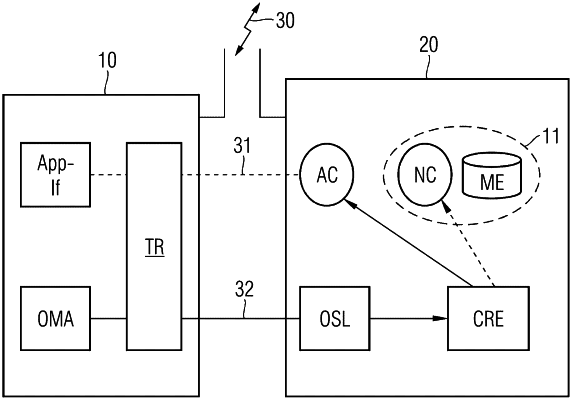| CPC G06F 11/142 (2013.01) [G06F 9/45558 (2013.01); G06F 9/5005 (2013.01); G06F 11/1471 (2013.01); G06F 11/1482 (2013.01); G06F 2009/4557 (2013.01)] | 12 Claims |

|
1. A method for orchestrating a container-based application that is executed on a terminal device, the method comprising:
receiving implementation information in an orchestration slave unit on the terminal device via a communication connection from an orchestration master unit, wherein the orchestration slave unit is controlled by a control manager in the orchestration master unit, and the orchestration slave unit reports a status at short time intervals; and
configuring and/or controlling the application by the orchestration slave unit based on a contingency policy contained within the implementation information, wherein the implementation information is additionally saved persistently in a memory unit in the terminal device;
wherein, if the communication connection to the orchestration master unit is interrupted, a most recently saved implementation information is retrieved from the orchestration slave unit and the application is configured and/or controlled based on a contingency policy of the most recently saved implementation information, and a safety-relevant container instance, identified by the orchestration master unit, is preferentially instantiated by the orchestration slave unit;
wherein the contingency policy of the most recently saved implementation information is designed such that different contingency measures are executed by different contingency levels;
wherein the orchestration slave unit changes a configuration and/or a control of the application depending on the contingency policy received from the orchestration master unit;
wherein the orchestration slave unit starts an at least one contingency container instance and/or stops at least one working container instance of the application depending on the contingency policy, and the different contingency levels comprise different level policies and, depending on an ascertained contingency level, a level policy assigned to the contingency level is activated by the orchestration slave unit.
|